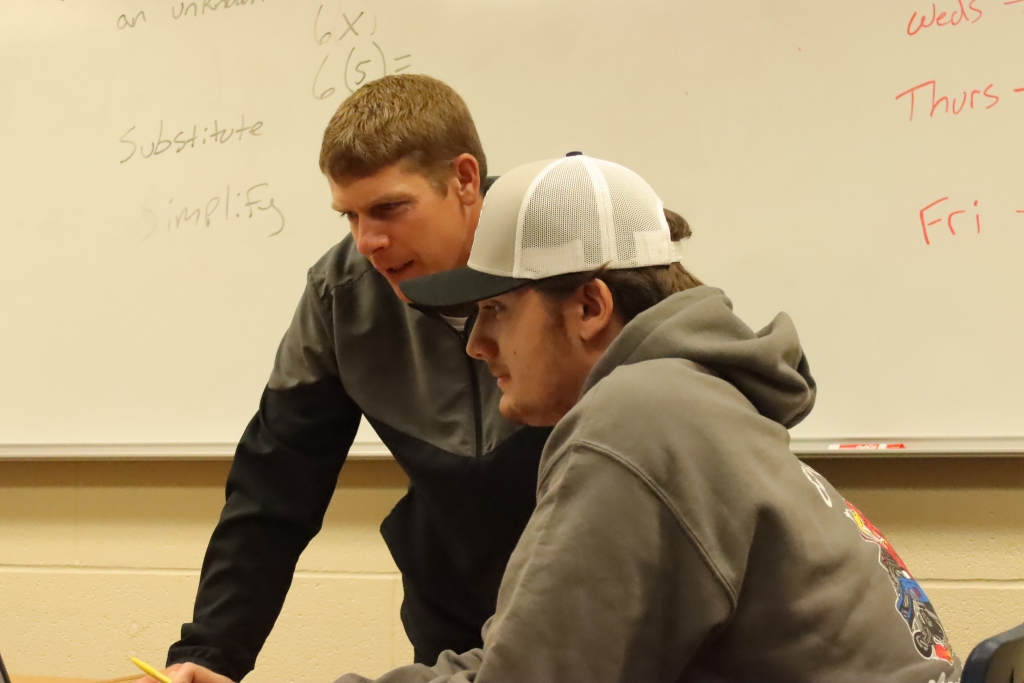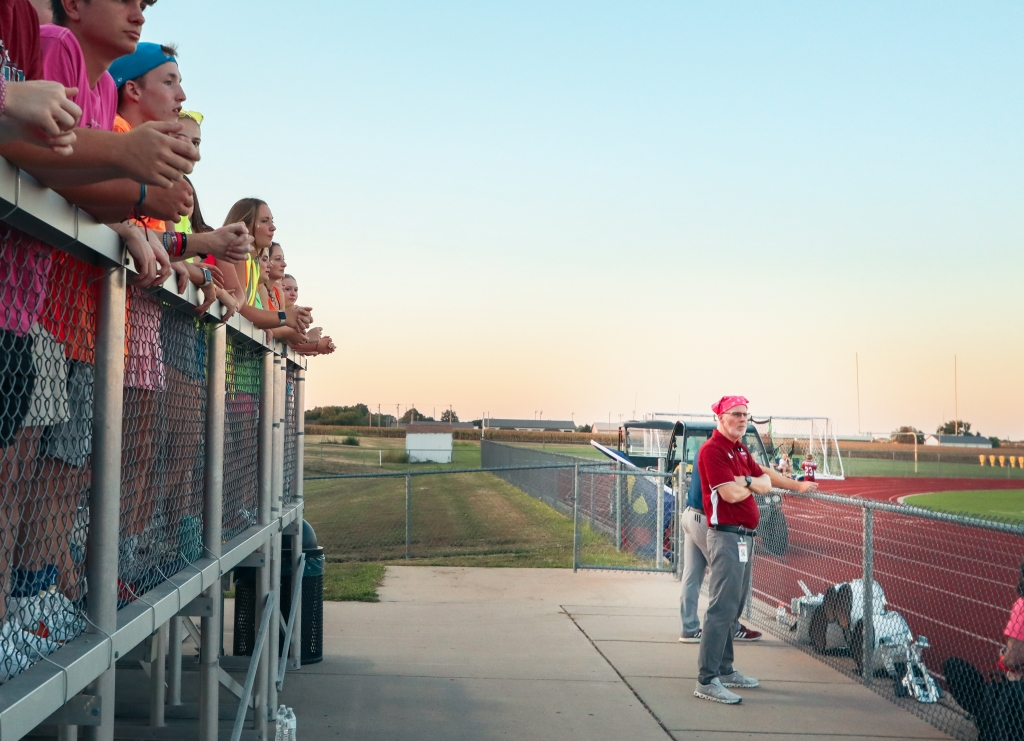Concussions
STORY BY DYLAN COLEMAN »
Student athletes get concussions
more often than you think. Since the
beginning of the year and Oct. 10,
13 Eudora High School athletes were
diagnosed with concussions.
According to the Centers for Disease
Control and Prevention, a concussion
is defined as a type of brain injury,
which can be triggered by a bump,
blow, or jolt to the head. This sudden
violent movement causes the brain to
move around in the skull, caus-
ing chemical changes, even
leading to damaged brain
cells. Although a con-
cussion is considered
a “mild” brain injury,
repeated concus-
sions can cause
long-lasting harm.
Josh Aarnes,
Athletic Trainer
for EHS, said
that concussions
are more apt to
happen in the fall
season.
“This is more
common this spe-
cific sports season,”
Aarnes said, “because
football is an intensive
contact sport and soccer
involves some contact and
the use of the head to play the
ball, which done incorrectly can
cause injury.”
Senior Sebastian Aguilar was in a
typical soccer game against Kansas
City Christian when he took an unex-
pected blow to the head.
“About the second half I was in our
box,” Aguilar said, “and a player was
shooting into our goal, and I went to
block the goal with my body. I hit the
ball pretty hard with my head.”
Other students have additional
issues. Even though Junior Kjersten
Inskeep didn’t get her concussion
from a sport, she still had to deal with
the effect on her school work.
“My concussion made schoolwork
nearly impossible,” Inskeep said. “I
couldn’t read or look at a computer or
phone screen at all because it would
be too much eye strain, so I couldn’t
pretty much do any homework.”
That left Inskeep scrambling for
some help when it came to keeping up
with her homework.
“My mom literally had to read my
science textbook to me when there
were readings assigned. It sucked and
I quickly fell behind,” Inskeep said.
Aguilar felt the pain as well when it
came to school work.
“[School] is really hard because
I was super sensitive to light and
noise… so it was super hard,” Aguilar
said. “Then it’s hard to do homework
and then you get behind because of
it.”
Students often are unaware they
even have a concussion. Aarnes
explained that it’s not always obvious
on the sideline to diagnose an athlete
with a concussion.
“With concussions it is complicat-
ed. It is not always visibly obvious
right away that an athlete has a con-
cussion, In fact, very few concussions
I have seen at Eudora have involved
a loss of consciousness,” Aarnes
said. “There are many differ-
ent ways a concussion can
present and symptoms
that need to be looked
for, this is because the
brain is so complex.
For this reason you
have to complete
a full evaluation
which is usually
done through a
testing tool called
the SCAT5.”
The SCAT5
is a tool used to
evaluating con-
cussions. This test
consists of: looking
for red flags on the
athlete such as loss of
consciousness, or double
vision, memory assessment,
and other ways to determine
if the athlete has suffered from a
concussion.
“My final word,” Aarnes said, “on
concussions would be this: Always
report symptoms if you take a blow to
the head.”
Aarnes wants to make sure that
students internalize an important
point “You may not think a concus-
sion is a big deal now, but it could be
having traumatic effects on your brain
which could impact you for the rest of
your entire life,” Aarnes said. “Always
report your symptoms.”





